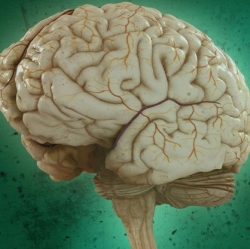
A new finding by Harvard stem cell biologists turns one of the basics of neurobiology on its head — demonstrating that it is possible to turn one type of already differentiated (formed from a stem cell) neuron into another within the brain.
The discovery by Paola Arlotta and Caroline Rouaux indicates that “maybe the brain is not as immutable as we always thought, because at least during an early window of time, one can reprogram the identity of one neuronal class into another,” said Arlotta, an Associate Professor in Harvard’s Department of Stem Cell and Regenerative Biology (SCRB).
The principle of direct lineage reprogramming of differentiated cells within the body was first proven by SCRB co-chair and Harvard Stem Cell Institute (HSCI) co-director Doug Melton and colleagues five years ago, when they reprogrammed exocrine pancreatic cells directly into insulin producing beta cells.
Arlotta and Rouaux now have proven that neurons too can change their mind. In their experiments, Arlotta targeted callosal projection neurons, which connect the two hemispheres of the brain, and turned them into neurons similar to corticospinal motor neurons, one of two populations of neurons destroyed in Amyotrophic Lateral Sclerosis (ALS), also known as Lou Gehrig’s disease.
To achieve such reprogramming of neuronal identity, the researchers used a transcription factor called Fezf2, which long as been known for playing a central role in the development of corticospinal neurons in the embryo.
